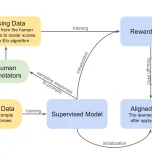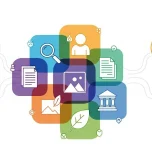You wouldn’t build a house without blueprints. You wouldn’t launch a product without knowing what success looks like. Yet many organizations approach AI red teaming by immediately diving into testing – firing prompts at their models, running automated scans, or hiring consultants – without first defining what they’re actually trying to protect against.
This backwards approach wastes resources and produces inconclusive results. A comprehensive red teaming report that identifies fifty vulnerabilities sounds impressive until you realize you have no framework for deciding which five actually matter for your business.
Effective AI red teaming doesn’t start with tools or tests. It starts with clarity about what you’re protecting and why.
Safety Policies Come First, Not Last
Before your red team attempts a single attack, you need documented safety policies that answer a deceptively simple question: what does “safe” mean for your AI system?
The answer varies dramatically based on your use case. For a customer service chatbot, the highest risk might be revealing sensitive customer data or providing dangerous misinformation. For an AI reviewing loan applications, bias and fairness are paramount. For a healthcare diagnostic tool, accuracy under edge cases could be life-critical.
Your safety policy should define specific risk categories relevant to your AI system, establish clear boundaries between acceptable and unacceptable behaviors for each category, set measurable thresholds that determine when a vulnerability requires immediate action, and document the business and societal risks that drive these decisions.
This upfront discipline transforms red teaming from a vague “find problems” exercise into targeted security testing with clear success criteria. When your red team discovers issues, you’ll have a framework for evaluating severity and prioritizing fixes instead of drowning in an undifferentiated list of findings.
Think of safety policies as your red teaming compass. Without them, you’re exploring aimlessly. With them, every test has purpose and every finding has context.
Two Critical Questions Every Organization Must Answer
Building effective safety policies requires honest answers to two foundational questions. The clarity of your answers directly determines the effectiveness of your red teaming program.
Question 1: What are the primary business and societal risks posed by our AI system?
List every potential harm your AI could cause if compromised, misused, or malfunctioning. Consider data breaches and privacy violations, biased or discriminatory outputs, misinformation or harmful advice, financial losses or fraudulent transactions, safety risks in physical systems, reputational damage, and regulatory non-compliance.
Then prioritize ruthlessly. You cannot defend against everything equally – attempting to do so spreads resources thin and leaves you vulnerable everywhere. Identify your top three to five risks based on likelihood and potential impact.
A financial services AI might prioritize fraud prevention, regulatory compliance, and data privacy above creative jailbreaking attempts. A healthcare diagnostic AI might prioritize accuracy under adversarial conditions and fairness across patient populations above conversational safety.
Your unique risk profile should drive every subsequent decision about methodology, tools, and resource allocation.
Question 2: How do we clearly define acceptable versus unacceptable behavior for each risk category?
Vague policies produce inconsistent testing. “The AI should be fair” means nothing actionable. “The AI’s approval rates across demographic groups should not vary by more than 5% when controlling for relevant financial factors” provides clear, testable criteria.
For each priority risk, define specific, measurable boundaries. What counts as a data privacy violation? When does a response cross from edgy to harmful? How much performance degradation under stress is acceptable?
These definitions guide both testing design and results interpretation. They also create documentation that satisfies auditors and regulators who increasingly require evidence of systematic AI safety practices.
Documenting these answers takes time, often requiring collaboration across security, legal, product, and leadership teams. But organizations that invest in this clarity see dramatically better returns from their red teaming investments.
Build, Buy, or Partner: Choosing Your Approach
With safety policies established, you face a practical decision: how will you actually conduct red teaming? Three main approaches exist, each with distinct trade-offs.
Building Internal Capabilities
Some organizations develop in-house red teams with dedicated security specialists who understand both AI systems and adversarial techniques. This approach offers maximum control and deep institutional knowledge – your team understands your specific systems, business context, and risk priorities.
However, building internal capabilities requires significant investment. You need to hire scarce AI security talent, provide ongoing training as threats evolve, acquire and maintain testing tools and infrastructure, and dedicate full-time resources to red teaming rather than development.
This approach makes sense for large organizations with complex AI deployments, high-risk applications in regulated industries, or strategic commitments to AI as core business infrastructure. If AI represents competitive advantage and you’re deploying it in sensitive contexts, internal capabilities provide the depth and continuity necessary for mature security programs.
Buying Automated Platforms
Automated red teaming platforms offer scalability and efficiency without building teams from scratch. Tools like Mindgard, Garak, and PyRIT provide systematic vulnerability scanning, comprehensive attack coverage, and repeatable testing processes.
These platforms excel at continuous monitoring, testing against known vulnerability patterns, and providing baseline security assessments. They’re cost-effective for organizations that need consistent testing but cannot justify full internal teams.
The limitation is that automated tools follow their programming. They’re excellent at depth – exhaustively testing variations of known attacks – but less effective at discovering completely novel vulnerabilities that require human creativity and contextual understanding.
Partnering with Specialized Providers
Many organizations partner with AI security specialists who provide expertise without requiring internal team development. This approach combines human creativity with specialized knowledge, offering access to experts who red team AI systems full-time and stay current on emerging threats.
Partnerships work well for organizations beginning their AI security journey, those with periodic rather than continuous testing needs, or companies that want expert validation of their internal efforts. The trade-off is less day-to-day control and dependency on external availability.
The reality for most organizations isn’t choosing one approach exclusively – it’s finding the right combination. You might use automated platforms for continuous baseline testing, conduct quarterly manual assessments with partners, and gradually build internal expertise to coordinate and interpret results.
The AI Red Teaming Tool Landscape
Whether building internal capabilities or selecting platforms, understanding available tools helps you make informed decisions. The AI red teaming tool ecosystem has matured significantly, offering options for different needs and skill levels.
Comprehensive platforms like Mindgard provide end-to-end red teaming across the AI lifecycle, combining automated testing with expert guidance. These platforms suit organizations wanting integrated solutions rather than assembling separate tools.
Specialized vulnerability scanners like Garak focus on automated detection and penetration testing at scale, ideal for regular security checks against known attack patterns.
Testing frameworks like PyRIT and Foolbox help security teams build custom tests for specific vulnerabilities, offering flexibility for organizations with unique requirements or specialized AI systems.
Bias detection tools like AI Fairness 360 concentrate on fairness and equity testing, crucial for AI systems making consequential decisions about people.
Adversarial robustness frameworks like Meerkat test NLP models specifically, addressing vulnerabilities unique to language processing.
The right tools depend on your AI architecture, risk priorities, internal expertise, and budget. Organizations often start with one or two tools addressing their highest-priority risks, then expand coverage as their security programs mature.
Bridging the Talent Gap
Here’s an uncomfortable truth: there aren’t enough AI security experts to meet demand. The rapid evolution of AI has outpaced workforce development, creating a significant talent shortage precisely when organizations need these skills most.
This gap explains the growth in automated platforms and specialized service providers – they help organizations access expertise that cannot be hired. But there are additional strategies for addressing the talent challenge.
Train existing security teams in AI-specific vulnerabilities. Your current security professionals understand adversarial thinking and testing methodologies; they need AI-specific knowledge, which training programs can provide more quickly than hiring.
Leverage hybrid approaches that combine automated tools with limited expert guidance. Automation handles comprehensive coverage while scarce human expertise focuses on high-value creative testing and results interpretation.
Participate in community knowledge-sharing through conferences, research publications, and industry groups. The AI security community actively shares findings and methodologies – take advantage of collective learning.
Partner strategically with providers like Aya Data who specialize in AI red teaming. This gives you access to dedicated expertise without competing in the talent market for full-time hires.
The talent gap is real, but it’s not insurmountable. Organizations that combine tools, training, and strategic partnerships can implement effective red teaming despite limited internal AI security expertise.
Integration with AI Security Posture Management
Red teaming shouldn’t exist in isolation from your broader AI security practices. The most effective programs integrate red teaming with AI Security Posture Management (AI-SPM), creating a comprehensive approach to AI security.
AI-SPM provides the foundation: inventorying all AI assets across your organization, defining risk thresholds and scoring frameworks, maintaining policies and governance structures, and tracking vulnerabilities and remediation over time.
Red teaming provides the testing: actively probing for vulnerabilities, validating that policies are effective, and discovering new risks before they’re exploited.
Together, they create a continuous improvement cycle. AI-SPM tells you what AI assets exist and what risks they theoretically face. Red teaming tests whether those assets actually resist attacks. Findings feed back into AI-SPM, refining risk assessments and updating policies.
This integration ensures red teaming targets your most critical AI components, findings are tracked systematically over time, and security efforts align with overall risk management frameworks.
Your Red Teaming Checklist
Building a comprehensive red teaming strategy involves numerous decisions and considerations. Here’s a high-level checklist to guide your planning:
Policy Foundation: Document safety policies with clear risk categories and measurable thresholds. Answer the two critical questions about risks and acceptable behaviors. Align policies with regulatory requirements and business objectives.
Approach Selection: Evaluate build, buy, and partner options against your resources and needs. Choose appropriate tools for your AI architecture and risk profile. Plan for scaling as your AI deployment grows.
Scope Definition: Inventory AI systems requiring testing. Prioritize based on risk, criticality, and exposure. Define testing frequency for different system categories.
Execution Planning: Establish testing methodologies (manual, automated, hybrid). Create adversarial scenarios aligned with your risk priorities. Plan for both point-in-time assessments and continuous monitoring.
Results Management: Define processes for reviewing findings and assessing severity. Establish remediation workflows and accountability. Plan for retesting after fixes are implemented.
Integration and Evolution: Connect red teaming with AI-SPM practices. Schedule regular policy reviews as AI capabilities and threats evolve. Build feedback loops between testing findings and development practices.
This checklist provides structure without being prescriptive – your specific implementation depends on your unique context, resources, and risk profile.
Setting Realistic Expectations About Residual Risk
Here’s the final truth about AI red teaming: you will never achieve perfect security. No amount of testing eliminates all vulnerabilities. Residual risk always exists.
This isn’t defeatist – it’s realistic. The goal of red teaming isn’t eliminating all risk; it’s understanding your risk profile well enough to make informed decisions about what’s acceptable.
After thorough red teaming, you should be able to say: “We’ve tested against known attack vectors and our priority risks. We’ve addressed critical vulnerabilities and accepted manageable ones. We understand our remaining exposure and believe it’s appropriate given our use case and risk tolerance.”
That informed acceptance of residual risk differs fundamentally from hoping your AI is secure without testing. It represents mature risk management rather than wishful thinking.
Organizations with realistic expectations build sustainable security programs. Those expecting perfection either spend infinitely on security that never feels adequate or become disillusioned when testing reveals inevitable vulnerabilities.
Build Your AI Red Teaming Strategy with Expert Guidance
At Aya Data, we help organizations design and implement AI red teaming strategies tailored to their specific needs. Whether you’re just defining your safety policies or ready to execute comprehensive testing, we provide the expertise to make your red teaming program effective and efficient.
Our team works with you to answer the critical questions about your AI risks, evaluate build-buy-partner options for your context, select and implement appropriate tools and methodologies, integrate red teaming with your broader AI security posture, and establish sustainable processes that evolve with your AI systems.
We understand that every organization’s AI journey is unique, which is why we don’t offer one-size-fits-all solutions. Instead, we assess your specific situation and recommend approaches that match your resources, timeline, and risk profile.
Ready to build a red teaming strategy that actually works for your organization? Contact us today for a free consultation where we’ll discuss your AI security challenges and help you chart a path forward that’s both practical and effective.
In our final article in this series, we’ll look ahead at the future of AI red teaming – exploring emerging challenges, evolving regulatory landscapes, and what organizations should prepare for as AI systems and threats continue to advance.






